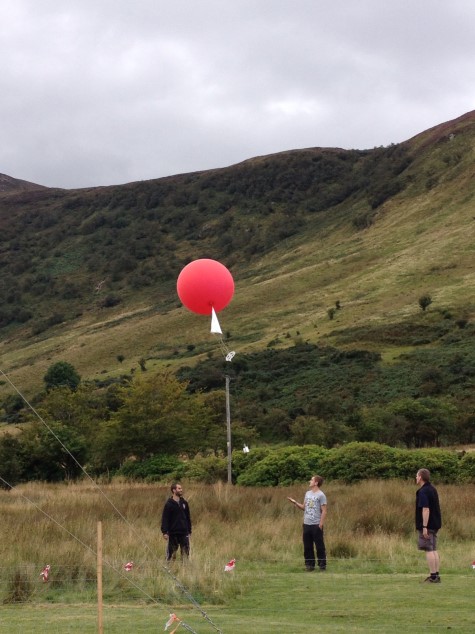By Pete Inness
We’ve now had 3 weeks of the Autumn Term and the undergraduate students at Reading are already taking part in a number of activities to get them out of the classroom and experience some of the more practical elements of meteorology.
In their first week at Reading our first year undergraduates launched a weather balloon from our atmospheric observatory. The balloon rose to a height of 22 km before it burst (well into the stratosphere) and it gave us a detailed profile of the temperature, humidity and winds through the depth of its ascent. We will be using the data from the balloon throughout this term to illustrate various points in our “Introduction to Meteorology” module.
Meanwhile the second year students are participating in a module on Weather Forecasting. As well as preparing a number of different types of forecast, this module gives the students a chance to film and record a “live” TV weather forecast using the professional facilities in the TV studio of Reading University’s Department of Film, Theatre and Television. Peter Gibbs from the BBC TV Weather Centre will be giving a master-class on presenting weather forecasts later this term as part of this module.
Our final year students had already spent a week on a field trip to the Isle of Arran before term even started. There they took lots of measurements in the field, including an ascent of the highest mountain on Arran carrying meteorological instruments to see how the weather varied as they climbed. They also prepared weather forecasts, analysed data from a portable weather station and launched weather balloons each day, tracking some of them by theodolite to analyse the wind profile in the boundary layer. On one occasion they were able to detect a sea-breeze circulation, with the wind blowing from the sea near the surface but blowing back towards the sea a few hundred metres above the ground.
Figure 1. students launching a weather balloon at the field study centre on the Isle of Arran in western Scotland
Later this term our final year students will be heading down to Exeter to visit the headquarters of the Met Office. This will give them a chance to see the working environment at the UK’s biggest meteorological organisation and hear about the weather forecasting and climate research that goes on there. Perhaps most importantly they will also have a talk from staff in the human resources department with advice on how best to complete an application for jobs at the Met Office when their recruitment round starts in a few months time.
Over the remainder of the academic year the students will be taking lots of other opportunities to get out of the lecture theatre and spend time with hands on activities that help to bring to life the material they encounter during lectures and other classroom sessions.

